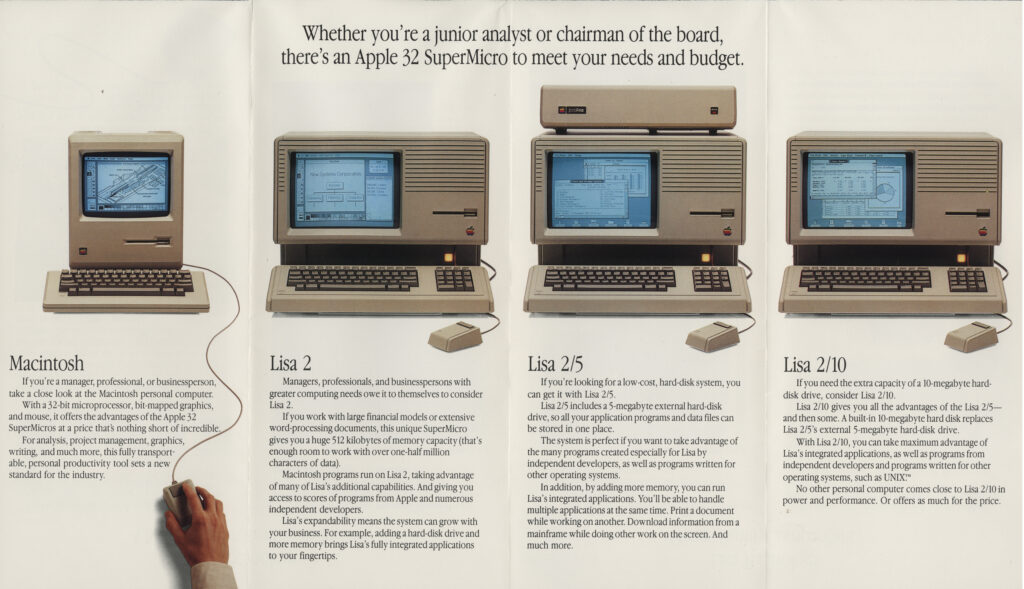Computer History Museum (CHM) AnnounceAuthorized by Apple Inc., the Apple Lisa Publishing all its source code, including system and application software, as part of the Art of Code series on its 40th anniversary.
access code here
The Apple Lisa system was released on January 19, 1983.Unlike the Apple II, which was aimed at the home computer market, the Lisa was aimed primarily at the business market, with itsUsing a powerful Motorola 68000 microprocessor coupled with a hard drive,List price $9995. It is precisely because of its high price and many problems in software/floppy disks that the commercialization of Apple Lisa has not been successful.But despite this, the Apple Lisa is still a milestone, it is the world’s firstGUI (GUI) and mouse for personal computer.
“Apple’s Macintosh line of computers today is credited with bringing mouse-driven GUIs to the masses and changing the way we usecomputerFamous in the same way, it owes its existence to its immediate predecessor at Apple, the Lisa. Without the Lisa, there would be no Macintosh — at least not in the form we have today — and probably no Microsoft Windows either. “

According to the introduction, the Apple Lisa comes with a suite of applications, including a word processor, spreadsheet, and charts (bundled with the system), which prevents third-party developers from writing their own software for it. The original Lisa also shipped with an in-house designed floppy drive (Twiggy), but it wasn’t reliable. Lisa’s GUI is inspired by elements of Xerox PARC’s Smalltalk system, but also includes new innovations that have been tested and proven by users.
Two years before the Apple Lisa, Xerox released the Star, a GUI-based commercial workstation for $16,595, also aimed at office workers. Both machines were expensive compared to the IBM PC (a command-line-based PC released two years earlier that retailed for $1,565), which ultimately killed them. But there were other big problems too, namely that the Lisa’s complex operating system, which allowed multiple programs to run at the same time (multitasking), was too powerful even for its 68000 processor, and therefore slow.
Following the launch of the Lisa in 1983, the Lisa 2 series was priced in January 1984 $2495 Released with the Apple Macintosh (now known as the Mac).The Lisa 2 line includes two models, the Lisa 2/5 and 2/10, priced at $3495 and $5495, respectively. The Lisa 2 replaced the original Lisa’s dual Twiggy floppy drives with a single Sony 3.5-inch floppy drive, the same drives found in the Mac.
In January 1985, the Lisa 2/10 was renamed the Macintosh XL and came with MacWorks, an emulator that allowed it to run Mac software. Despite improved sales, the product was phased out in April 1985 to focus on the Mac.The Macintosh competed with the Lisa and eventually became the most popular computer due to its lower price and open software ecosystem. Other GUI-based operating systems, such as Windows, came after the Lisa and the Macintosh, and were heavily influenced by both.

Apple Lisa was named after Lisa Brennan (now Brennan-Jobs), the child of Jobs and his former high school girlfriend, but later officially“Local Integrated Software Architecture” (Local Integrated Software Architecture) English abbreviation.
Although the Lisa failed in the market, it has an important place in the history of GUIs and PCs as the first GUI-based computer released by a personal computer company. Although the Xerox Star 8010 beat the Lisa to market in 1981, the Star competed with other workstations from Apollo and Sun. Perhaps more importantly, the Macintosh itself wouldn’t be GUI-based without the integration of Lisa and its PARC-inspired GUI. The two computers share key technologies such as the mouse and the QuickDraw graphics library. The Lisa was a key stepping stone for the Macintosh and an important milestone in the history of graphical user interfaces and the PC.
#Celebrating #40th #anniversary #CHM #released #source #code #Apple #Lisa #News Fast Delivery